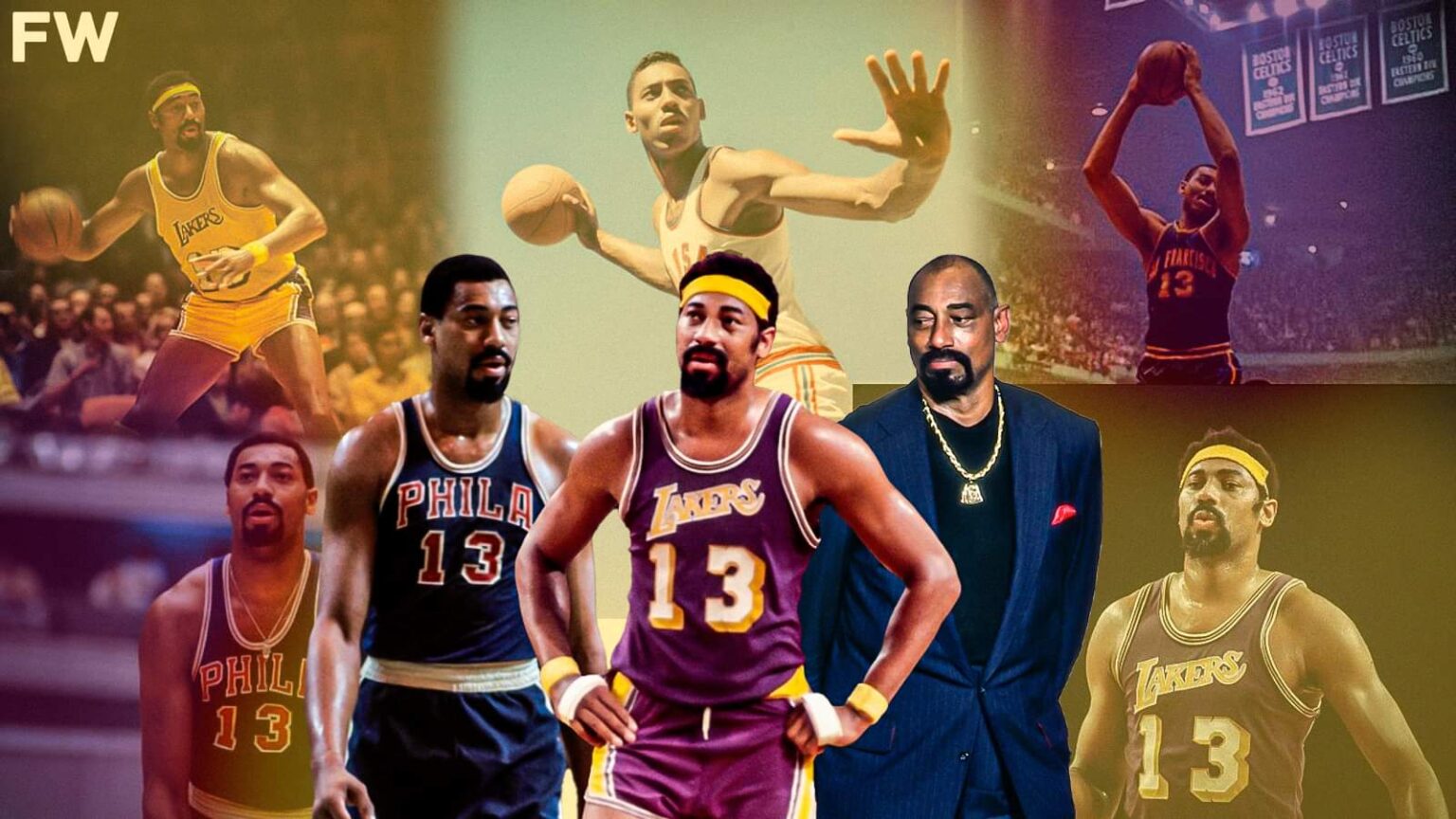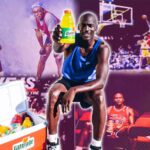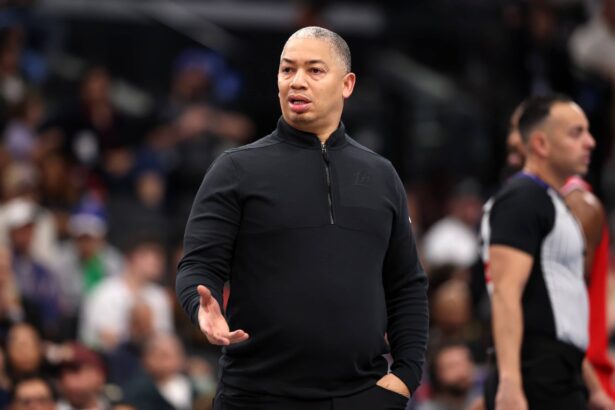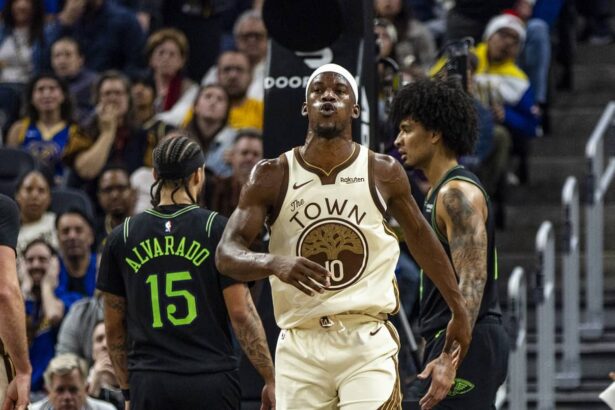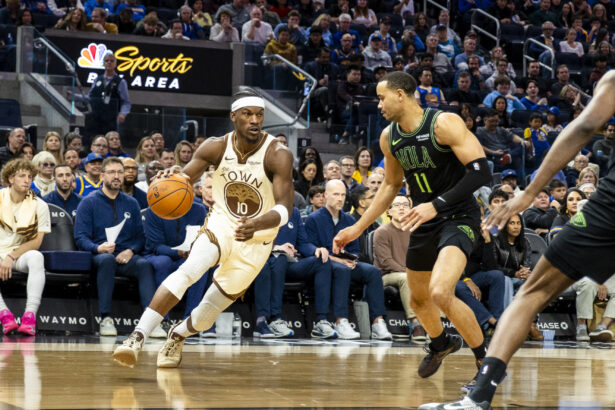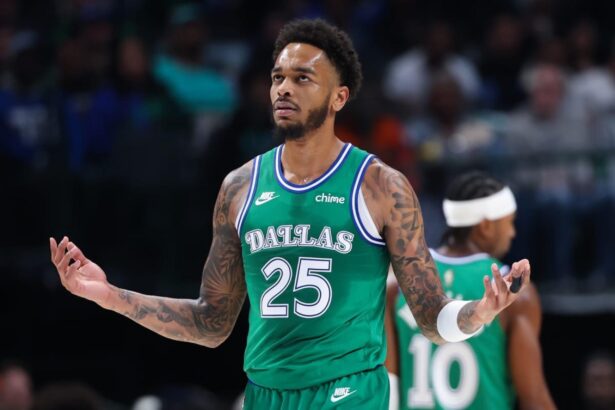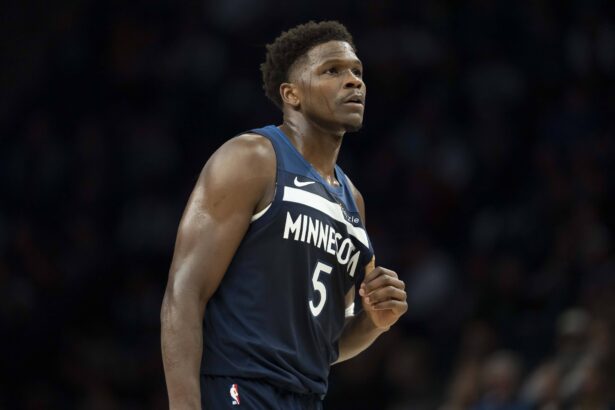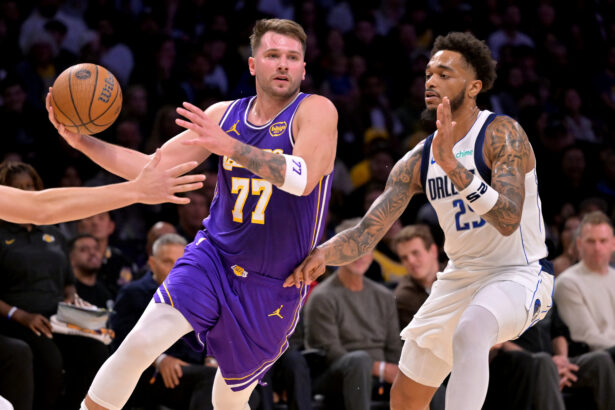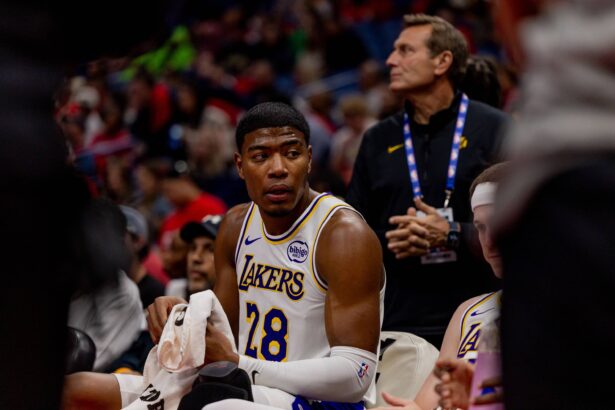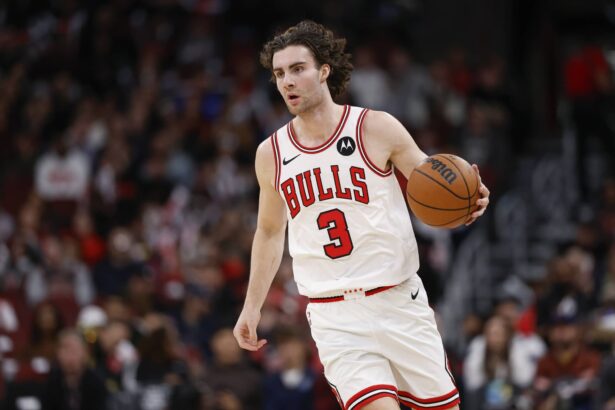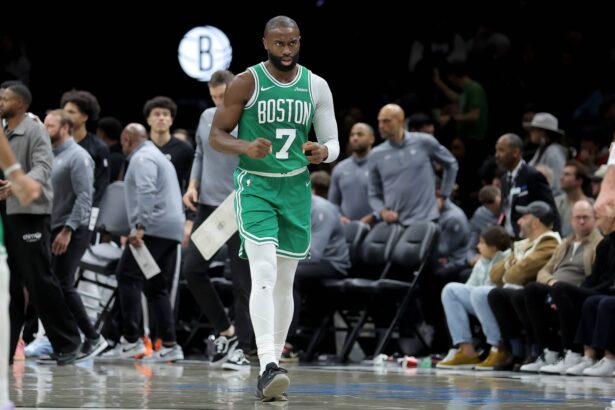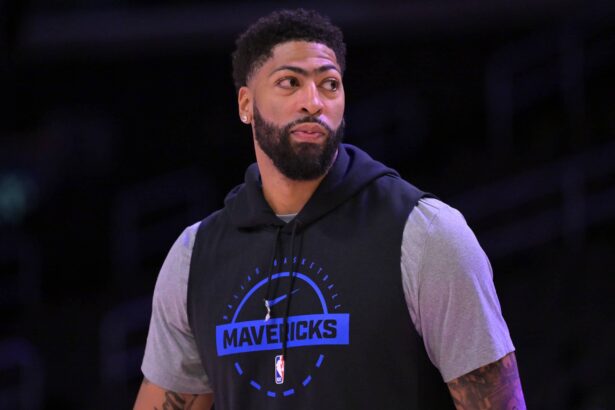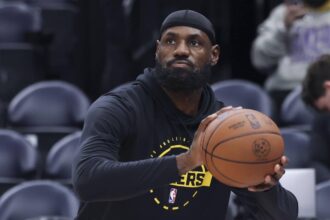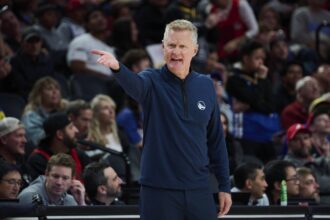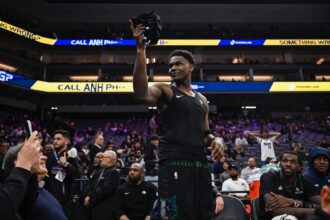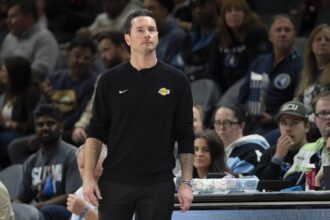Wilt Chamberlain’s name is one of major lore in the basketball community. It seems like whenever you open the NBA record book, you see Wilt’s name at the top.
- Wilt Chamberlain: The Beginning
- Wilt Enters The NBA And Continues His Dominance
- Wilt’s Failures And His Success In The NBA
- Wilt’s Retirement And Legacy
- Next
- Larry Bird Biography: The Boston Celtics Legend That Dominated The NBA
- Magic Johnson Biography: How The NBA’s Greatest Passer Defeated A Deadly Illness To Become A Successful Businessman
- LeBron James: The Biography Of The NBA’s King
- The Biography Of The G.O.A.T.: Michael Jordan
- Kobe Bryant Biography: The Life Of The Black Mamba
Every NBA fan knows Wilt Chamberlain’s name. They know he scored 100 points in a game, but do they know about Wilt’s life?
In this article, we’ll dive deep into who Wilt Chamberlain was as a person, his life, and of course, his incredible basketball career. This is the biography of Wilt Chamberlain.
Wilt Chamberlain: The Beginning
Wilton Norman Chamberlain was born on August 21, 1936, to parents William Chamberlain and Olivia Ruth Johnson. Wilt, as he famously went by, had a tough time as a young child.
Wilt became so sick from pneumonia as a child that he nearly died. The sickness cost Wilt a full year of school. Of course, Wilt would recover from his illness and attend school, but basketball wasn’t on his mind at the time.
At first, Wilt wasn’t a fan of basketball. In fact, he called basketball “a game for sissies.” Wilt’s sport of choice was track and field, and he was quite good at it.
Wilt participated in many different events for track and field, and here are a few of his incredible achievements:
– 440-Yard Dash: Wilt ran the 440-yard dash in 49.0 seconds
– 880-Yard Run: Wilt ran the 880 hard run in 1:58.3.
– High Jump: Wilt jumped 6 feet, 6 inches high
– Broad Jump: Wilt jumped 22 feet
– Shot Put: Wilt threw the shot put 53 feet, 4 inches
As you can see, Wilt was a natural-born athlete. Eventually, Wilt would try his hand at basketball, as all the other kids in the Philadelphia area lived and breathed basketball.
Like track and field, Wilt would become a natural at basketball, as he quickly dominated the competition. Wilt stood at 6’11” when he was in high school, and this, along with his freakish athletic ability, gave him an advantage that his opponents could not overcome.
Wilt earned a few nicknames because of his freakish height. Some he liked, like “The Big Dipper.” And some he hated, like “Wilt the Stilt.”
Wilt became one of the greatest high school basketball players of all time during his time at Overbrook High School. In three seasons at Overbrook, Wilt led his team to a 56–3 record.
Wilt had a streak of three games where he scored 74, 78, and 90 points. For his career, Wilt averaged 37.4 points per game and a record 2,252 total points, which has been since broken by Kobe Bryant.
On top of Wilt’s individual dominance, he also led Overbrook High School to two city championships in his three seasons. Colleges quickly started to try and recruit Wilt since they could see he was a once-in-a-lifetime talent.
It was reported that more than 200 colleges recruited Wilt, but he ended up choosing the University of Kansas. Before we discuss Wilt’s college career, we must talk about Wilt’s secret professional career that he had during his junior and senior years in high school.
That’s right, Wilt started his professional career at the age of 16, and it was in the National Basketball League (NBL). Wilt played for the Pittsburgh Raiders and the Quakertown Fays, and he did so under the name of George Marcus.
Wilt played under a pseudonym because if the Amateur Athletic Union found out, it could have ruined his chances of playing college basketball. Not only did Wilt play professional ball before turning 18, but he reportedly destroyed the competition, which was grown men.
It’s been said that Wilt averaged 54 points per game in the NBL, and in the playoffs, he averaged 74 points a game!
When Wilt got to college, he started for the University of Kansas’ freshman team, and they played the school’s varsity team, which had the expectations of winning the conference that season. In the exhibition game, Wilt scored 42 points and grabbed 29 rebounds as he led the freshman team to a ten-point victory.
The following year Wilt would play on Kansas’ varsity team, and in two years, Wilt averaged 29.9 points and 18.3 rebounds per game. Wilt led Kansas to the NCAA title game in his junior year against North Carolina, and Wilt’s team lost 54-53 in three overtimes.
Despite the loss, Wilt was named the Most Outstanding Player of the tournament. After his junior year, Wilt decided to leave school early. Because of the NBA’s age restrictions to play in the league, Wilt would have to sit out a year.
Wilt wouldn’t just sit around and just wait a year. No, he’d go play professional basketball with one of the most popular basketball players of all time… The Harlem Globetrotters.
Wilt played a full season with the Globetrotters, including being a part of the famous Soviet Union tour. After the year was up, Wilt was ready and eligible for the NBA.
Wilt Enters The NBA And Continues His Dominance
Wilt Chamberlain was selected third overall in the 1959 NBA Draft by the Philadelphia Warriors. In his first NBA game, Wilt proved to the world that he belonged in the NBA.
Wilt scored 43 points and grabbed 28 rebounds in his first game, which was against the New York Knickerbockers. This game was no fluke, as Wilt would go on to have arguably the greatest rookie season in NBA history.
Wilt averaged 37.6 points and 27.0 rebounds on 46.1% shooting. “The Big Dipper” ended up winning the NBA Rookie of the Year and NBA MVP awards.
After starting his NBA career, Wilt still played parts in several other seasons with the Globetrotters. His dedication to playing in both the NBA and for the Globetrotters was admirable, and this workload didn’t seem to slow Wilt down.
In his second season, Wilt raised his scoring average to 38.4 points per game. He also set the NBA record for the highest rebounds per game average with 27.2 per game.
By his third season, Wilt’s average blew up to a record 50.4 points per game. On top of his incredible scoring, Wilt averaged 25.7 rebounds per game.
This was the season where Wilt scored an NBA record 100 points in a game against the New York Knickerbockers, which was held in Hershey, Pennsylvania. Wilt shot 36-63 from the field and 28-32 from the free throw line, which was incredible since Wilt was a 51.1% career free throw shooter.
There was no video footage of Wilt’s incredible game, but there was audio from the game that has been discovered.
Despite Wilt’s video game averages, he did not win the MVP award. This would be given to his rival, Bill Russell, who averaged 18.9 points and 23.6 rebounds per game.
The reason for this was because of team success. Wilt’s Warriors went 49-31, while Russell’s Celtics went 60-20. This would become a theme in Wilt’s playing career, as his rivalry would grow intense with Bill Russell.
Wilt’s Failures And His Success In The NBA
Wilt Chamberlain and Bill Russell had a great relationship early on in their NBA careers. In fact, the two would pick each other up from the airport, and Russell would often sleep over at Chamberlain’s house the night before their two teams would play.
(Starts at 6:40)
“I mean, he’d come past my house on Thanksgiving, eat my food, sleep in my bed, and the next day whip my butt,” Wilt said in a 1997 interview with Bob Costas. “Now my mother would say, ‘Now, Wilt, we shouldn’t feed Bill so well next time’.”
On the court, the two battled numerous times, including in the playoffs. Sometimes, Wilt got the better of Russell, as he did in the 1967 NBA playoffs.
At this time, Wilt was now a part of the Philadelphia 76ers, and he led his team to a 68-13 record, the best in the league. Wilt won his third MVP award that season with averages of 24.1 points, 24.2 rebounds, and 7.8 assists per game. “The Big Dipper” won his second MVP the year prior, in the 1965-66 season.
Russell’s Celtics only won 60 games that season, meaning if their two teams met in the playoffs, Wilt’s squad would have the home-court advantage. They would meet in the Eastern Division Finals.
For the first and only time in his career, Wilt would defeat Russell in the playoffs, as his 76ers won 4-1 over Russell’s Celtics. Wilt averaged 21.6 points, 32.0 rebounds, and 10.0 assists in the series.
In the NBA Finals, Wilt’s 76ers took down his former team, the Warriors, who were now in San Francisco. The 76ers won 4-2 behind Wilt’s 17.7 points, 28.5 rebounds, and 6.8 assists per game averages.
Wilt was now an NBA champion, and if the NBA Finals MVP award had been given out, he most likely would’ve won that as well. The Finals MVP award wasn’t given out until the 1969 NBA Finals.
Despite this great win by Wilt, Russell dominated him overall in their careers. Russell went 57-37 against Wilt in the regular season and 29-20 in the playoffs. Russell also went 7-1 in playoff series against Wilt, on his way to 11 NBA titles.
The two rivals’ friendship off the court would soon crumble after Russell’s final championship, which was the 1969 NBA Finals, where the Celtics defeated Wilt’s Los Angeles Lakers. Wilt left Game 7 early after injuring his knee, and he didn’t return.
After the season and after Russell retired, he spoke about the game and how he felt that Wilt “copped out” of the game. Wilt didn’t like that, and it led to the two not speaking to each other for more than 20 years before finally making up.
Wilt would win one more NBA title in the 1971-72 season. “The Big Dipper” ended up winning the Finals MVP when he led his Lakers to a 4-1 victory over the New York Knicks. Wilt averaged 19.4 points and 23.2 rebounds per game in the Finals.
Wilt won one more MVP award in the 1967-68 season, which brought his total to four MVP awards in his career. The 1972-73 season would be Wilt’s last season, as he retired from the game of basketball, but he’d soon find a new game to dominate.
Wilt’s Retirement And Legacy
After retiring from the game of basketball, Wilt quickly found himself a new game in which he loved and would dominate. This would be the game of volleyball.
Sometime after retiring from basketball, Wilt met Gene Selznick, a Hall of Famer in volleyball. Wilt asked Selznick to teach him how to play volleyball, and Selznick agreed.
“One time when Wilt was there, he came up and asked me if I could teach him how to play volleyball. He heard I was the best volleyball player,” Selznick told Volleyball Magazine. “So, I took him to the beach and introduced him to a new way of life. He had a passion for volleyball and did pretty well for a guy who never played until he was about 34 years old.”
Wilt became a player-owner of the Southern California Bangers, where he’d play five games for one season. He would also play off and on for the Orange County Stars in 1977 and in the IVA All-Star Game.
Wilt won the MVP award in the IVA All-Star Game, proving his dominance in any sport he participated in. Wilt played a few times for the Seattle Smashers in 1978 before retiring from playing professional volleyball.
Other than volleyball, Wilt acted in movies after his playing days, including in Conan the Destroyer. Wilt truly was larger than life during his playing career and in his life. This is even true in Wilt’s romantic life, as he famously claimed to have slept with over 20,000 women.
When Wilt retired from the NBA, he finished with career averages of 30.1 points, 22.9 rebounds, and 4.4 assists per game on 54.0% shooting. Still, to this day, Wilt holds 72 NBA records.
The sad thing is Wilt’s dominance often gets overlooked since he didn’t have the same team success as Bill Russell and other NBA greats. This shouldn’t be the case, and we, as NBA fans, need to add more respect to Wilt’s name.
Wilt sadly passed away on October 12, 1999, from congestive heart failure. The man was a legend, and we at Fadeaway World honor Wilt Chamberlain for his incredible talent and for helping to build the NBA into the juggernaut league that it is today.

